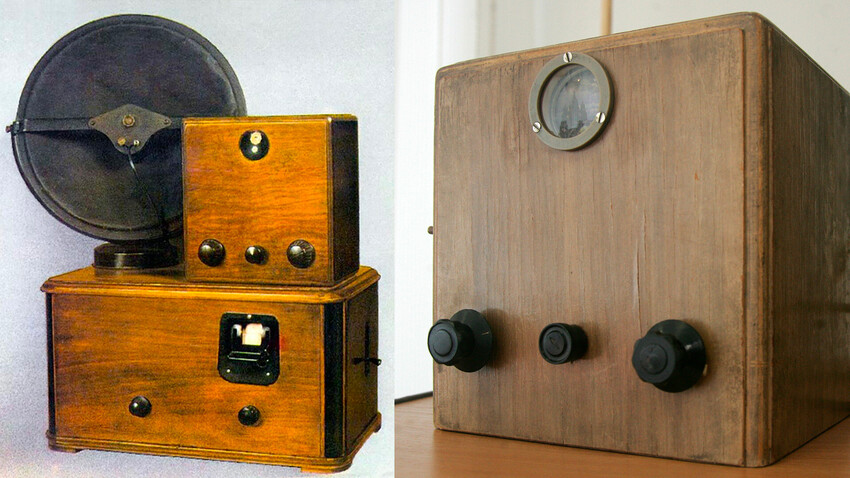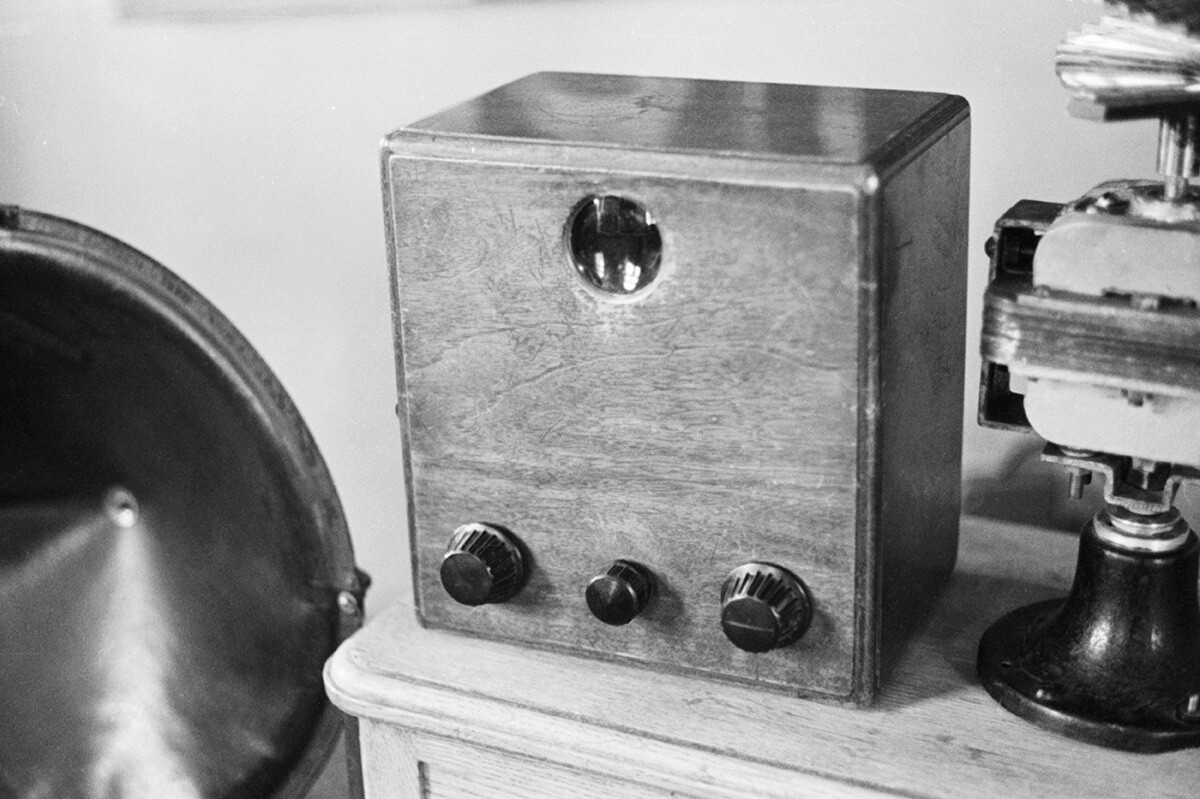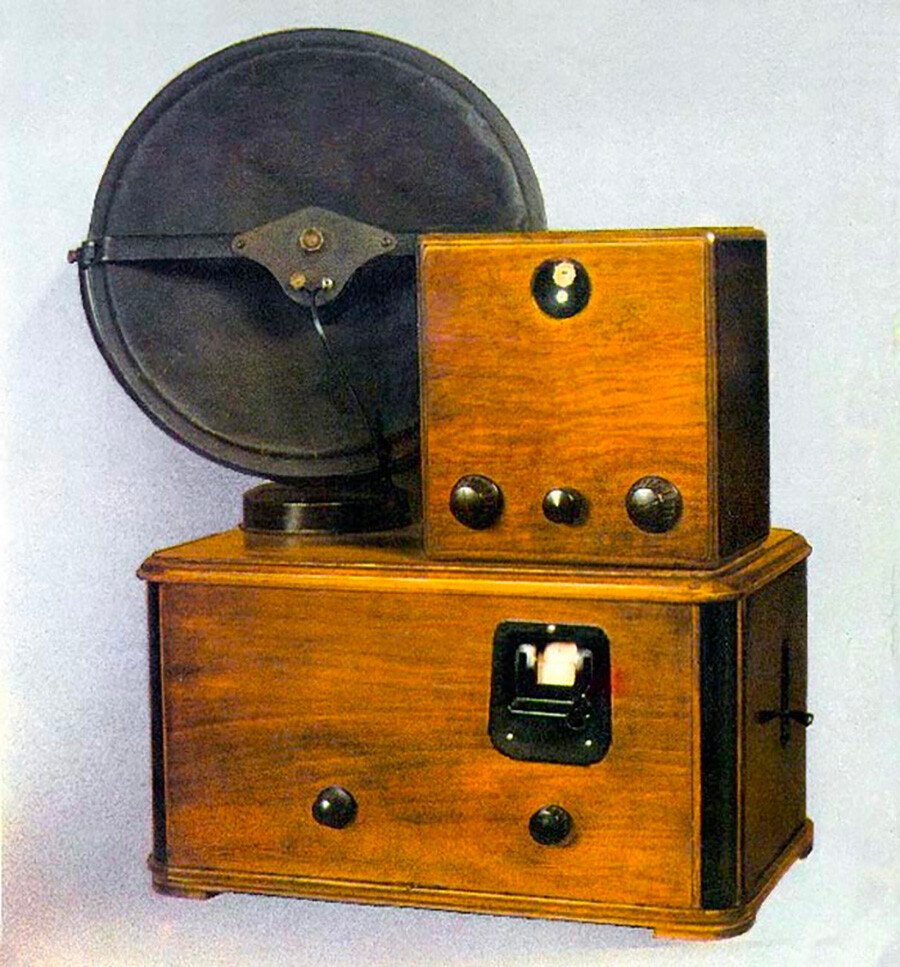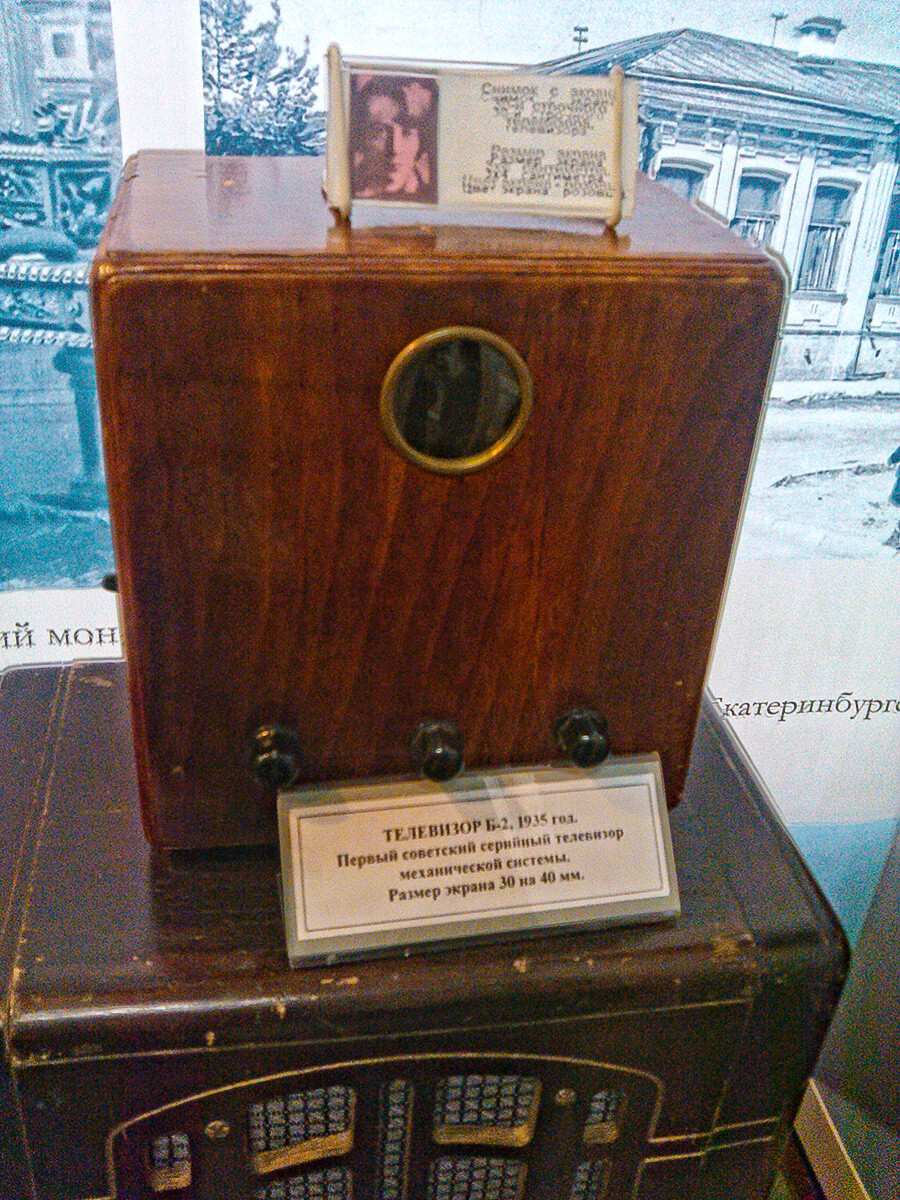

The view shows the first Soviet serial TV set B-2 produced the Kozitsky Leningrad Plant in 1935.
Valentin Kunov/TASSThey were called ‘B-2’ and looked like a wooden box with a small window, about 3 by 4 centimeters.
This marvel of technology was designed by an engineer named Anton Breitbant. ‘B-2’ is a mechanical TV set, which was based on a disk by German inventor Paul Nipkow. The design is very simple: imagine a disk with a number of holes of equal diameter, behind which there is a light source. With a fast rotation of the disk we will see luminous stripes and if we adjust the glow of the lamp, we will receive certain signals, which our eye will perceive as dynamic pictures.

The image was formed from only 30 lines and, to improve its quality, you would need a disk with diameters of several meters, which was technically impossible. In addition, the ‘B-2’ had to be connected to a radio receiver, as the sound was transmitted separately.

In just a few years, the USSR managed to produce 3,000 ‘B-2’ TV sets. They cost 235 rubles - approximately a worker's monthly salary.

Nevertheless, due to constructive difficulties, already in 1940, the mechanical television was replaced by electronic television. TV sets with cathode-ray tubes appeared. They could transmit images with a frequency of up to 400 lines.
Dear readers,
Our website and social media accounts are under threat of being restricted or banned, due to the current circumstances. So, to keep up with our latest content, simply do the following:
If using any of Russia Beyond's content, partly or in full, always provide an active hyperlink to the original material.
Subscribe
to our newsletter!
Get the week's best stories straight to your inbox